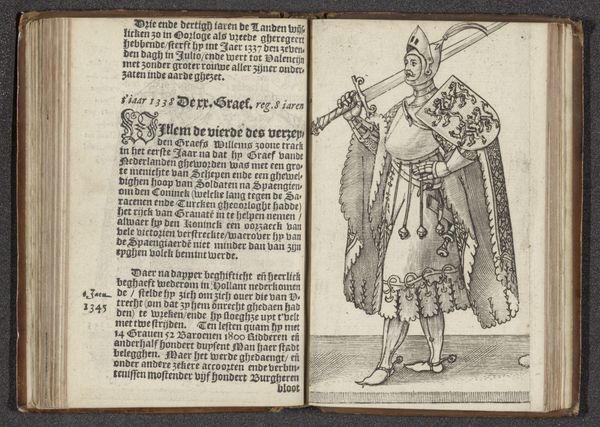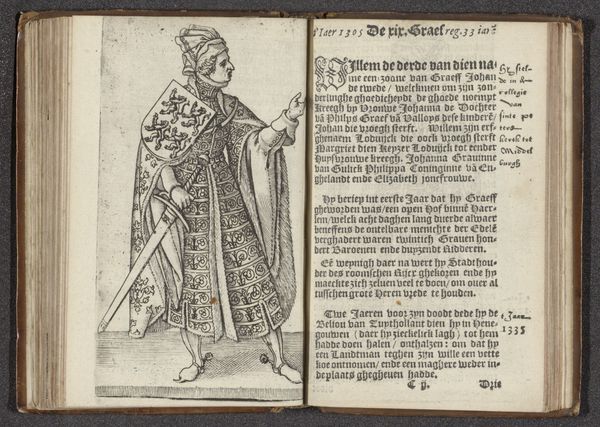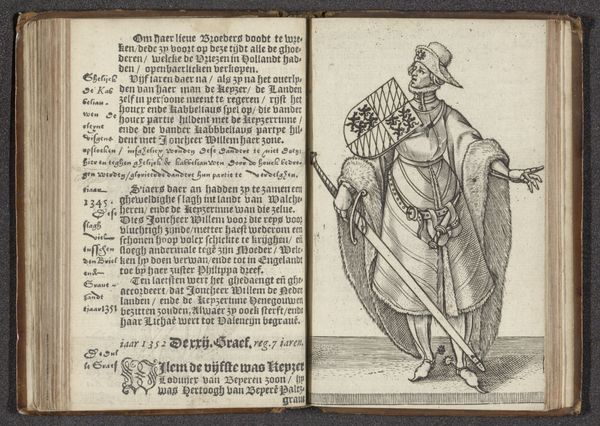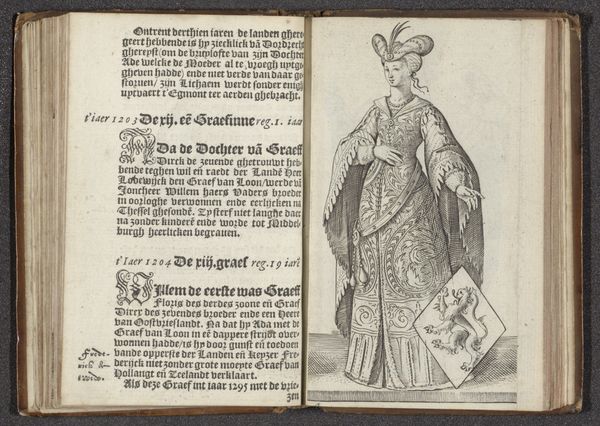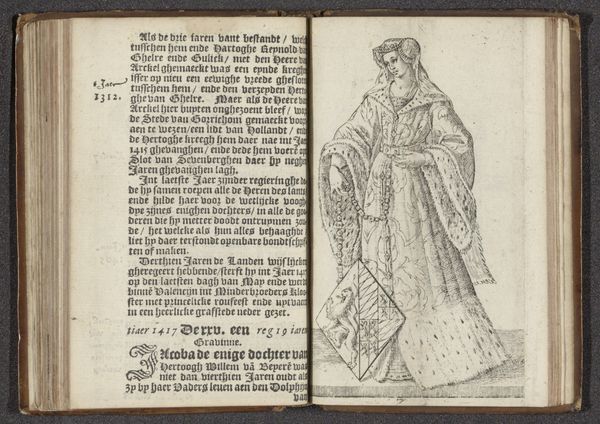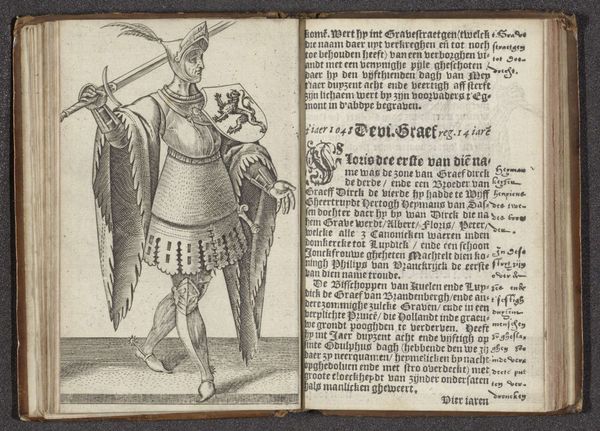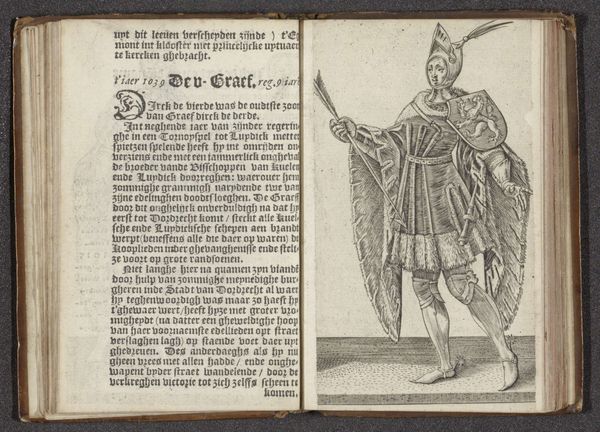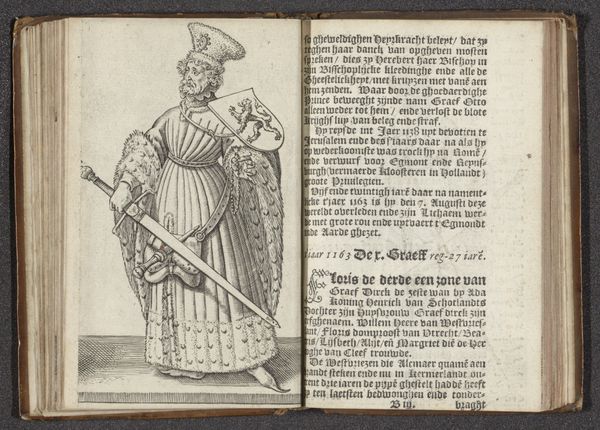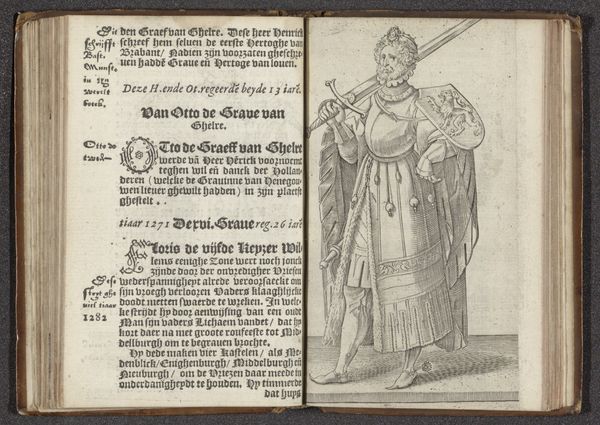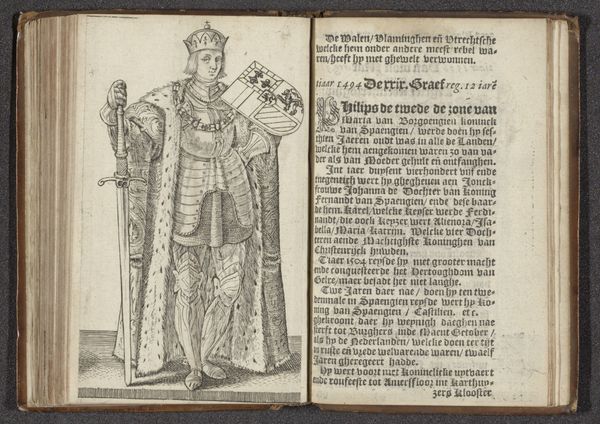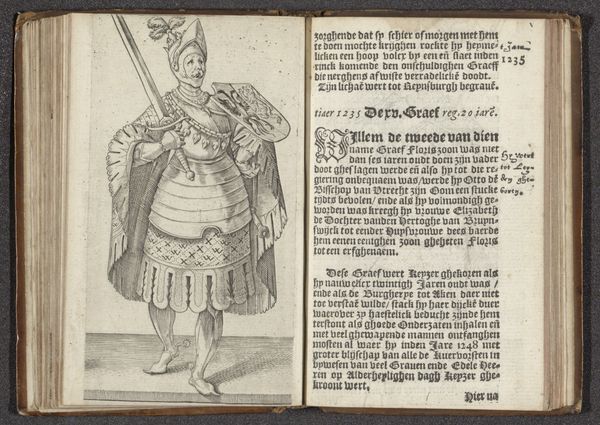
print, engraving
#
portrait
# print
#
history-painting
#
northern-renaissance
#
engraving
Dimensions: height 135 mm, width 85 mm
Copyright: Rijks Museum: Open Domain
Editor: This engraving, "Margaretha van Beieren," made by Hendrick Goltzius around 1586 or 1587, strikes me with its intricate detail, particularly in the queen’s garments and crown. How do you read this piece as a formalist? Curator: I appreciate your observation. Formally, consider how Goltzius employs line and texture. The engraving technique allows for remarkable precision in depicting fabric and jewelry. Look closely: the textures created through the use of varying line weights and cross-hatching contribute significantly to the illusion of depth and volume. The symmetry in the composition and her vertical pose create balance, what could this imply in Northern Renaissance prints? Editor: I see what you mean about the use of line. But, beyond that, I'm not quite sure I can appreciate it formally. Does the symbolism of her stance influence our interpretation? Curator: The question should be: how do the visual elements themselves create symbolic meaning? Her upright stance and direct gaze contribute to a sense of authority. The relationship between form and content are symbiotic, though they are not necessarily connected. Is the scale, format, and execution connected in some way to meaning in the image, and the image to its function as illustration to text on the right? Editor: I never thought about it that way! Focusing solely on the formal elements gives a completely new meaning. Now the texture, symmetry and pose suddenly underscore a powerful and composed authority that could be missed otherwise. Thanks. Curator: Absolutely. And it is an effect of a unique approach to the work itself!
Comments
No comments
Be the first to comment and join the conversation on the ultimate creative platform.
